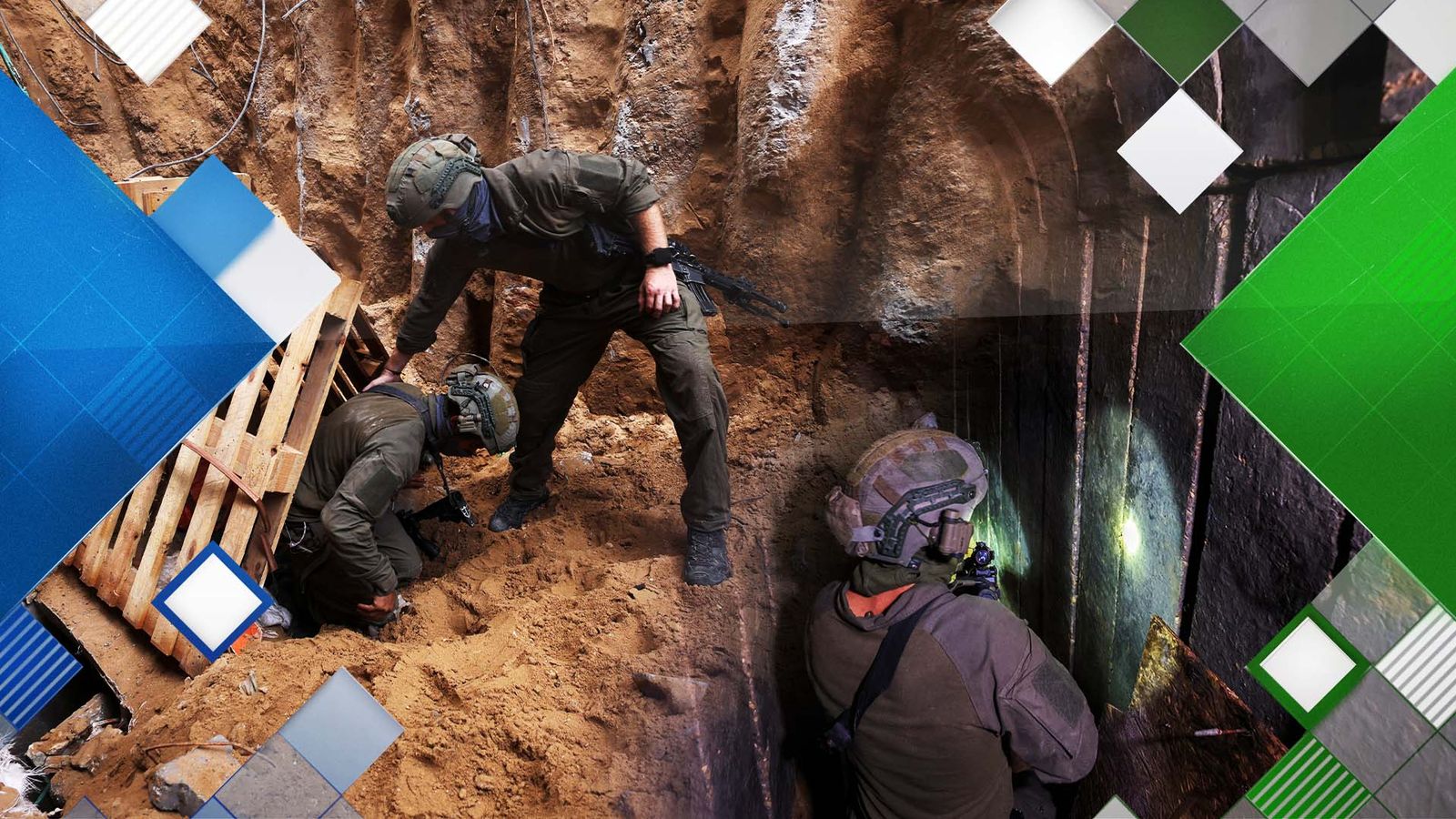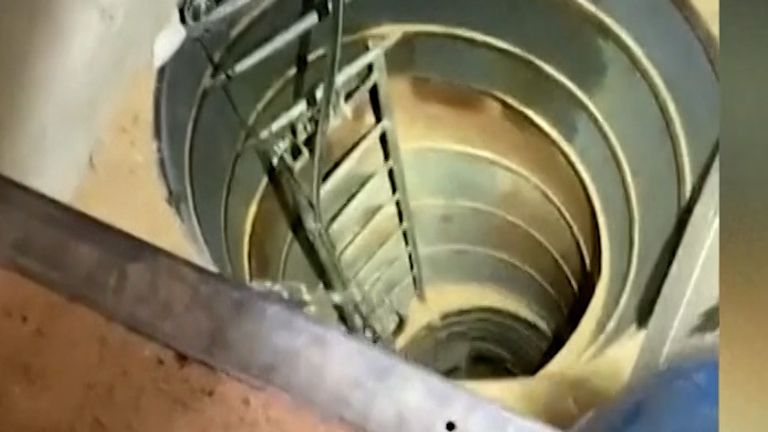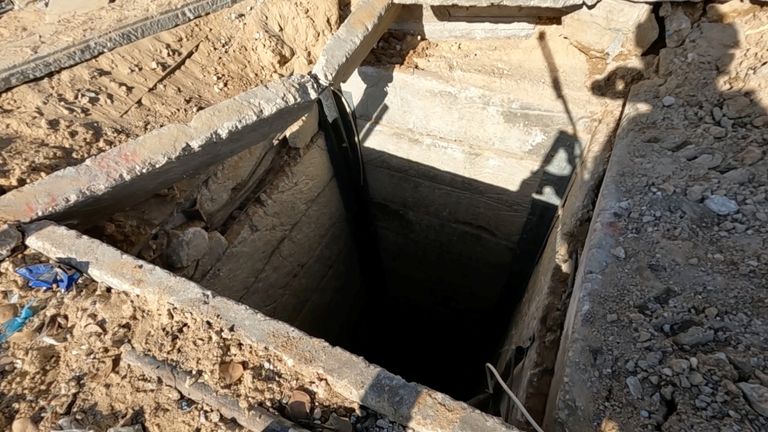Despite overwhelming military superiority, Israel is struggling to develop an effective strategy to tackle the tunnel network under Gaza.
This “underworld” has provided Hamas with a degree of sanctuary beyond the gaze of satellites, drones and military forces.
How will Israel defeat Hamas without destroying the tunnel network?
The “Gaza metro” is bigger in scale than the London Underground network. Many of the tunnels were originally dug in the early 1980s to bypass the border between Egypt and Rafah, enabling the illegal smuggling of trade and weapons.
However, they have since been expanded into two further categories: defensive and offensive.
The former is primarily focused on the storage of weapons, logistic supplies (fuel, water and food) and command and control HQs, whereas the latter is an elaborate network of tunnels across the border into Israel to enable Hamas to take small-scale offensive action, and crucially to seize hostages.
Since assuming control of Gaza in 2006, Hamas has taken the development of the tunnel network to a new level.
The soft sandstone under Gaza is conducive to tunnelling, but Hamas has also adapted the network in response to Israel’s various attempts to destroy it.
Israel-Gaza latest: UN ceasefire vote fails
Bunker buster bombs could penetrate deep underground – and if they did not destroy a tunnel directly, the shifting sands would cause nearby tunnels to implode.
By digging the tunnels deeper – the main network is now over 20m (65ft) down rather than around 10m (32ft) for the original tunnels – Hamas made them far more difficult to target and destroy.
They have also been lined with reinforced concrete.
Tunnelling is not a new concept. Over 2,000 years ago, Jewish rebels used tunnels to revolt against Roman rule, and Viet Cong fighters exploited an extensive underground network in its (ultimately successful) war against US forces in Vietnam.
Most dynamically, it was in the First World War that tunnels were used to try to break the stalemate, where professional tunnelling engineers burrowed under enemy positions and used huge quantities of explosives to devastating effect.
Hamas has long recognised that the tunnel network could provide an asymmetric advantage over its Israeli enemy, and by 2021 they claimed to have established a network over 500km (310 miles) long, which has provided a sanctuary away from Israel’s military might.
The Israel Defence Forces (IDF) claim to have discovered over 800 access shafts into the tunnel network, and it has destroyed or sealed over 500.
However, the tunnel network itself is too dangerous for the IDF to clear, so for now, it remains an underworld dominated by Hamas.
Read more from Sky News:
Israel faces two big risks if it decides to flood the Hamas tunnels
Video appears to show Israeli forces strip dozens of Palestinians
Data reveals more than half of Gaza’s hospitals are no longer operational
So how could Israel destroy the network?
The first challenge is to establish where the tunnels lie. The urban terrain makes them too difficult to locate via sensors, but using coloured smoke and sealing off an access point can track where the smoke emerges – known as the “Purple Hair” technique.
However, ultimately it is about entering the maze and plotting the network.
Then – how to destroy it?
Explosives can destroy sections of the network, but they can be cleared relatively easily and damaged sections reconstructed.
Sealing up all access shafts renders the network unusable for a short time – but in a way also provides greater sanctuary for those underground as they have fewer entrances to protect.
This week, the Israelis have suggested they are planning to flood the tunnels with seawater. However, the tunnels are not all at the same level, so seawater might flood sections, but probably not the whole network.
The sandstone floors are porous, so huge quantities of water would need to be injected, and swiftly, to avoid the water simply draining away.
Also, some of the fresh water for Gaza comes from underground aquifers, and these would be contaminated – perhaps for some time – if salt water was to be introduced.
And finally, flooding would be indiscriminate – any hostages held in the tunnels (probably most) would be very vulnerable.
Hamas has successfully identified that it is no match for the Israeli militarily, but the extensive tunnel network provides it with a very tangible asymmetric advantage.
It is unlikely that Israel will have the time – or appetite – to conquer this alien underworld. Instead, it is likely to endure as a stark reminder that there is no military solution to the conflict, and that military superiority does not always guarantee battlefield success.






